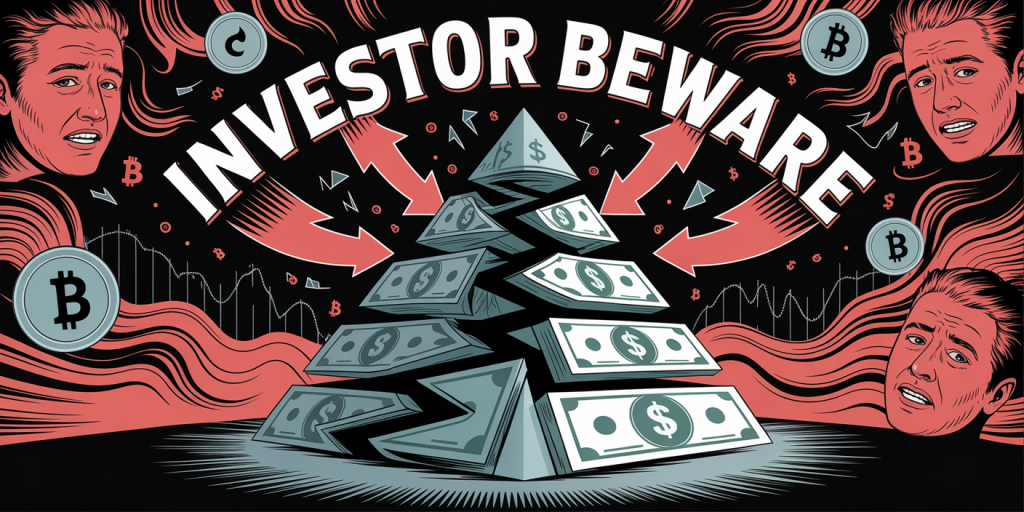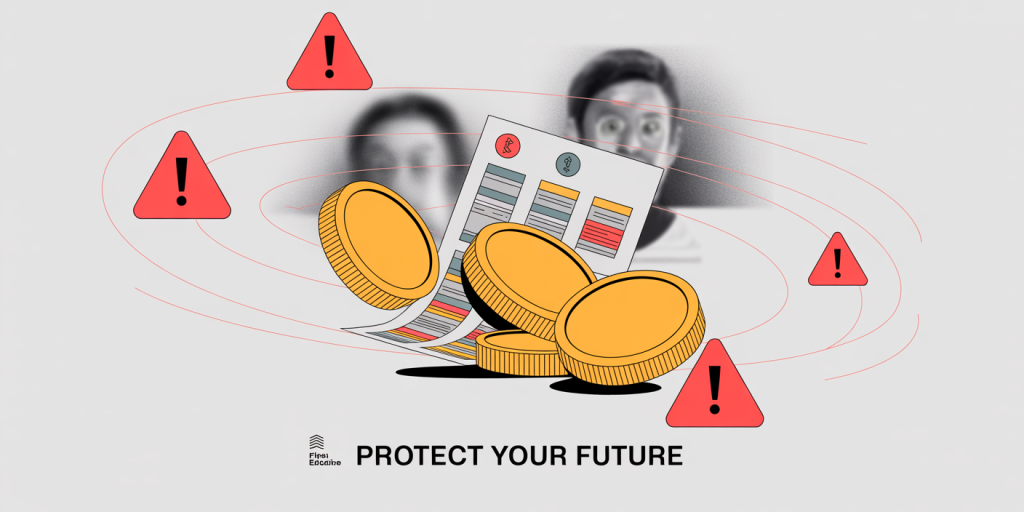How to Avoid Common Investing Scams and Red Flags
Anúncios
Investing offers promising opportunities to grow wealth, secure financial independence, and prepare for future goals. However, the increasing accessibility of investment platforms combined with complex financial products has made investors vulnerable to scams. According to the Federal Trade Commission (FTC), consumers lost over $5.8 billion to investment fraud in 2022 alone, marking a 70% increase from the previous year. This alarming trend highlights the critical need for caution and due diligence when investing money.
Navigating the investment landscape requires awareness of typical scams and red flags that can foist significant financial harm. Investors must empower themselves with knowledge, recognize warning signs, and apply practical strategies to protect their assets. This article delves deeply into how to avoid common investment scams, identify red flags, and make informed decisions amidst a growing number of fraudulent schemes.
Anúncios


Recognizing Common Types of Investment Scams
Investment scams come in various forms but often share core characteristics—promises of unrealistic returns, pressure tactics, and lack of transparency. The most prevalent include Ponzi schemes, pump-and-dump tactics, affinity fraud, and fake initial coin offerings (ICOs). Understanding each type can prevent falling victim.

Ponzi schemes, named after Charles Ponzi, who orchestrated one of the earliest such scams in the 1920s, involve paying returns to earlier investors using the capital raised from new investors rather than from profit earned. Bernie Madoff’s $65 billion Ponzi scheme is one of the largest in history, revealing how extensive and deeply destructive such frauds can be. Recently, smaller-scale Ponzi schemes continue to surface with perpetrators promising steady, high returns in low-risk investments, a glaring red flag.
Pump-and-dump scams involve artificially inflating the price of low-value stocks through misleading statements to generate buying frenzy. Once prices soar, scammers offload their shares at inflated prices, causing the stock price to crash and investors to experience losses. Cryptocurrencies, being largely unregulated, have become hotbeds for such schemes. For example, in 2021, the SEC charged promoters for manipulating prices of certain crypto tokens that led to significant investor losses.
Identifying Red Flags in Investment Opportunities
Investors must develop an eye for suspicious signals in investment propositions. While some scams rely on sophisticated deception, many are easily identifiable by warning signs.
One significant red flag is the promise of guaranteed or abnormally high returns with little or no risk. No legitimate investment can assure high returns without risk. A scheme offering 20% monthly returns or consistent profits regardless of market conditions should raise immediate suspicion.
Another classic warning sign is high-pressure sales tactics urging immediate investment decisions without sufficient evaluation time. Scammers often use phrases like “limited offer,” “act now,” or “exclusive opportunity” to rush victims. For instance, the infamous case of the Fort Pierce Ponzi scheme involved salespeople pushing investors to put money in quickly while discouraging critical questions.
Lack of verifiable information about the company or the individuals managing funds is another important red flag. Legitimate firms provide clear contact details, regulatory licenses, and transparent financial reports. Conversely, scammers typically operate from unverifiable locations with anonymous or fake credentials.
Conducting Due Diligence: Tools and Best Practices
Effective due diligence is the cornerstone of scam avoidance. Investors have numerous resources at their disposal to verify investment legitimacy and assess risks.
Firstly, checking registration and regulatory status through official bodies such as the U.S. Securities and Exchange Commission (SEC), Financial Industry Regulatory Authority (FINRA), or equivalent local agencies is crucial. These organizations maintain public databases where one can confirm if an investment advisor or firm is registered or has prior disciplinary actions.
Secondly, perform background checks on the company and the individuals behind the investment. Searching for reviews, news articles, and public records can reveal reputational issues. For example, platforms like the Better Business Bureau (BBB) or Trustpilot provide customer feedback on companies’ credibility.
Furthermore, investors should request detailed information including prospectuses, audited financial statements, and risk disclosures. An inability or refusal to provide such documentation is a serious warning.
A comparative table below helps distinguish between typical attributes of legitimate investments and scams:
| Aspect | Legitimate Investment | Scam Investment |
|---|---|---|
| Returns | Variable; linked to market conditions | Guaranteed or abnormally high |
| Regulatory Status | Registered with FINRA/SEC and other agencies | Unregistered or unverifiable |
| Transparency | Provides detailed financial reports and disclosures | Vague or missing documentation |
| Pressure Tactics | Encourages informed decision-making | Uses urgency or fear to rush decision |
| Communication | Responsive with verifiable contact information | Avoids direct contact or uses fake identities |
Real-World Examples of Investing Scams and Lessons Learned
Real cases provide invaluable insights for recognizing scams. One striking example is the 2019 OneCoin cryptocurrency fraud, which duped investors globally out of $4 billion. The scheme promised revolutionary returns and employed aggressive marketing and fake technological demonstrations. Authorities highlighted how lack of independent verification and transparency were key in the scam’s success.
In contrast, the Wirecard scandal, a German fintech company, exposed accounting fraud but initially attracted many investors due to high-profile endorsements and seemingly strong growth. The lesson reveals that even seemingly reputable investments can mask fraudulent activities, emphasizing the importance of routine oversight and skepticism.
Another instructive case is the 2022 “PumpMyBitcoin” scam, whereby influencers on social media promoted a cryptocurrency pump scheme that collapsed within weeks, causing millions in losses. This demonstrates how social proof via influencers can be misleading and why individual verification rather than blind trust is essential.
Avoiding Scams through Smart Investing Habits
Developing sound, disciplined investing habits reduces vulnerability to scams. One effective strategy is diversification: spreading investments across different assets and sectors minimizes risks associated with any single opportunity.
Additionally, investors should shy away from “too good to be true” offers and insist on understanding investment mechanics before committing money. Never invest funds derived from loans or emergency reserves into high-risk or unverified opportunities.
Keeping emotions in check is also key—scammers often prey on greed, fear, or urgency. A prudent investor evaluates opportunities methodically, seeks second opinions, and sleeps on potentially risky decisions.
Utilizing trusted financial advisors with verified credentials augments personal knowledge. Certified Financial Planners (CFPs), for instance, are held to strict ethical standards and can help navigate complex instruments safely.
The Future of Investment Fraud and How to Stay Ahead
The investment fraud landscape continues to evolve with technology. Advances like blockchain and AI create new avenues for both legitimate innovation and sophisticated scams. For instance, the rise of decentralized finance (DeFi) has attracted fraudulent schemes exploiting smart contract vulnerabilities.
Regulators worldwide are stepping up efforts to address these challenges. In 2023, the SEC launched a new task force dedicated to crypto fraud enforcement, leading to an increase in prosecutions and investor protections.
Investors must therefore stay updated with regulatory changes, understand emerging technologies, and apply critical thinking. Cybersecurity awareness, such as protecting digital wallets and passwords, will become increasingly important.
Moreover, educational initiatives focusing on financial literacy are vital to empowering investors. According to a 2022 National Financial Educators Council report, financial education reduces the likelihood of falling victim to investment scams by 40%.
In conclusion, the key to avoiding investment scams lies in vigilance, thorough research, skepticism towards unrealistic promises, and adopting disciplined investment practices. While fraudsters continue to devise clever schemes, informed and cautious investors are best positioned to safeguard their finances and build enduring wealth.
